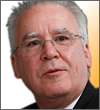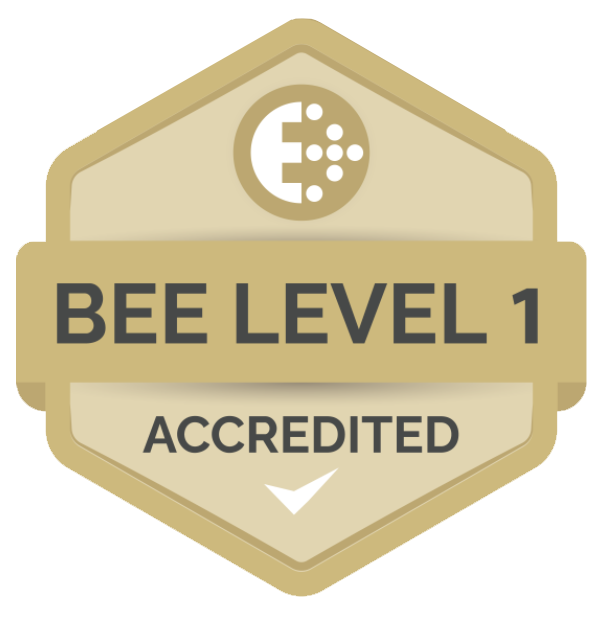 Responsibility for the supply chain is moving to board level, a report by AMR Research has noted. “Twenty years ago, a typical product company had the supply chain reporting to manufacturing, with responsibility mainly for inbound materials management and outbound shipping.”
Responsibility for the supply chain is moving to board level, a report by AMR Research has noted. “Twenty years ago, a typical product company had the supply chain reporting to manufacturing, with responsibility mainly for inbound materials management and outbound shipping.”
According to Kevin O’Marah and Debra Hofman, the authors of the AMR report, “new data shows that supply chain reports to manufacturing in only 6 % of companies surveyed, while 61 % have the head of supply chain reporting directly to the CEO, general manager or president of the business. It seems clear that supply chain has grown up and the business has taken notice.”
A CPO reporting directly to the CEO affords an organisation the opportunity to achieve sustainable profitability. The largest portion of an organisation’s spend usually lies within Supply Chain function activities. It is only fitting to have a strategic focus with regard to how the organisation’s resources are deployed and spent,” says Ronald Mlalazi, Commerce Edge Academy Education Manager.
The AMR report named Apple the company with the best supply chain practices in the world for a third year running.
Why have CPOs previously been absent from the boardroom?
 A majority of CEOs will readily agree that procurement competence is one of the pillars of excellence. However, they and their next tier of management have a limited vision of the possibilities that a board-level CPO brings to the table, said Neil Deverill, when still acting as Group Head of Procurement for Anglo American plc.
A majority of CEOs will readily agree that procurement competence is one of the pillars of excellence. However, they and their next tier of management have a limited vision of the possibilities that a board-level CPO brings to the table, said Neil Deverill, when still acting as Group Head of Procurement for Anglo American plc.
However, it’s not just management that’s at fault. CPO’s have not been flaunting their skills enough, said Deverill on Procurementleaders.com.
“The truth of the matter is that a CPO’s leadership and influencing skills are more important than the actual reporting line.”
CPOs must demonstrate to management what is missing from organisations’ strategies and then demonstrate consistent strategies to rectify this, he said.
In this way Procurement development will receive management’s support, which it requires. Management must come to understand that within supply chains “there is a role for every player, including the CEO,” said Deverill.
Is the CPO role morphing into a Supply Chain Director?
 The concept of Supply Chain Management (SCM) is asking CPOs to acquire more skills, says Mlalazi.
The concept of Supply Chain Management (SCM) is asking CPOs to acquire more skills, says Mlalazi.
SCM puts more emphasis on strategic focus whilst Procurement as a function has a tactical focus.
A conventional CPO role tended to be of a narrower scope as it is usually limited to Procurement and strategic sourcing activities such as material specifications; monitoring the supply chain environment; supplier relationship management; management of investment recovery and inbound logistics, he says.
A Supply Chain Director’s job has a wider scope and far reaching impact in as far as achieving supply efficiency and effectiveness. This is a high level leadership position for which the incumbent must possess both management and leadership qualities with soft and hard skills, says Mlalazi.
SCM seeks to eliminate the “Silo mentality”, integrating and managing business processes across an organisation’s functions. It is based on the following management philosophy:
• Integrated behaviour.
• Mutually shared information.
• Mutually shared risks and rewards.
• Integrated processes.
• Partnerships and maintaining long-term relationships.
According to Mlalazi, a Supply Chain Director will be responsible for all the organisation value chain activities that are in place to achieve the following supply chain objectives:
• Integrate both internal and external competencies.
• Build alliances, relationships and trust throughout the supply system.
• Reduce costs and improve profit margins.
• Maximize the return on assets.
• Facilitate innovation and synchronise supply chain processes.
• Optimise the delivery of products, services, information and finance upstream and downstream, and across internal and external boundaries.
Placing planning, development, procurement, manufacturing, inventory control, inbound and outbound logistics and distribution under the stewardship of a SCM strategy offers to reduce cost and improve processes to a greater degree than a conventional CPO or procurement function can, concludes Mlalazi.
* From 1990-2008 Neil Deverill was Corporate Head Purchasing at Electrolux Sweden, Head of UK Govt Purchasing at CUP (HM Treasury), Corporate Head of worldwide Procurement for Philips Electronics based in Netherlands and finally Group Head of Procurement for Anglo American plc based in Johannesburg and then London.
For more information on the expanding role of CPOs under Supply Chain Management strategies contact Ronald Mlalazi on ronaldm@commerce-edge.com or visit procurementtips.com


AMR report – Supply Chain is making it to the board
According to Kevin O’Marah and Debra Hofman, the authors of the AMR report, “new data shows that supply chain reports to manufacturing in only 6 % of companies surveyed, while 61 % have the head of supply chain reporting directly to the CEO, general manager or president of the business. It seems clear that supply chain has grown up and the business has taken notice.”
A CPO reporting directly to the CEO affords an organisation the opportunity to achieve sustainable profitability. The largest portion of an organisation’s spend usually lies within Supply Chain function activities. It is only fitting to have a strategic focus with regard to how the organisation’s resources are deployed and spent,” says Ronald Mlalazi, Commerce Edge Academy Education Manager.
The AMR report named Apple the company with the best supply chain practices in the world for a third year running.
Why have CPOs previously been absent from the boardroom?
However, it’s not just management that’s at fault. CPO’s have not been flaunting their skills enough, said Deverill on Procurementleaders.com.
“The truth of the matter is that a CPO’s leadership and influencing skills are more important than the actual reporting line.”
CPOs must demonstrate to management what is missing from organisations’ strategies and then demonstrate consistent strategies to rectify this, he said.
In this way Procurement development will receive management’s support, which it requires. Management must come to understand that within supply chains “there is a role for every player, including the CEO,” said Deverill.
Is the CPO role morphing into a Supply Chain Director?
SCM puts more emphasis on strategic focus whilst Procurement as a function has a tactical focus.
A conventional CPO role tended to be of a narrower scope as it is usually limited to Procurement and strategic sourcing activities such as material specifications; monitoring the supply chain environment; supplier relationship management; management of investment recovery and inbound logistics, he says.
A Supply Chain Director’s job has a wider scope and far reaching impact in as far as achieving supply efficiency and effectiveness. This is a high level leadership position for which the incumbent must possess both management and leadership qualities with soft and hard skills, says Mlalazi.
SCM seeks to eliminate the “Silo mentality”, integrating and managing business processes across an organisation’s functions. It is based on the following management philosophy:
• Integrated behaviour.
• Mutually shared information.
• Mutually shared risks and rewards.
• Integrated processes.
• Partnerships and maintaining long-term relationships.
According to Mlalazi, a Supply Chain Director will be responsible for all the organisation value chain activities that are in place to achieve the following supply chain objectives:
• Integrate both internal and external competencies.
• Build alliances, relationships and trust throughout the supply system.
• Reduce costs and improve profit margins.
• Maximize the return on assets.
• Facilitate innovation and synchronise supply chain processes.
• Optimise the delivery of products, services, information and finance upstream and downstream, and across internal and external boundaries.
Placing planning, development, procurement, manufacturing, inventory control, inbound and outbound logistics and distribution under the stewardship of a SCM strategy offers to reduce cost and improve processes to a greater degree than a conventional CPO or procurement function can, concludes Mlalazi.
* From 1990-2008 Neil Deverill was Corporate Head Purchasing at Electrolux Sweden, Head of UK Govt Purchasing at CUP (HM Treasury), Corporate Head of worldwide Procurement for Philips Electronics based in Netherlands and finally Group Head of Procurement for Anglo American plc based in Johannesburg and then London.
For more information on the expanding role of CPOs under Supply Chain Management strategies contact Ronald Mlalazi on ronaldm@commerce-edge.com or visit procurementtips.com
Related Posts
Procurement Trends for 2024 According to Experts
Loadshedding’s ripple effect on SA’s supply chains
Towards resilient and robust procurement teams – 2023 Annual Procurement Survey
No quick fix for congestion at Durban container terminal
Latest Jobs
I am Talent
I am looking for Talent
I am looking for skilled candidates that are seeking a new job opportunity.
Leaders Profile
Talking to Jothi David
Leadership Profile: Riccardo Benedetti
Procurement Leader: Colette Yende
Procurement Leader: Kamalasen Chetty, Visa
Movers and Shakers in Procurement
Deon Mocke
Zunaid Rasdien MCIPS
Dr Khomotso Mhelembe
Sanet Shepperson MBA (CIPS), FCIPS, MCIPS
Graeme Mcluggage
What you might have missed
Talking to Jothi David
Addressing Fragmentation: The Way Forward for Africa
The “A” candidate (vs) the “B” candidate
Automating Quote Sourcing a Wise Move
Update On Panama Canal Drought – Increased Transportation & Cost Risk
Upcoming Courses